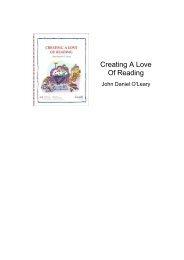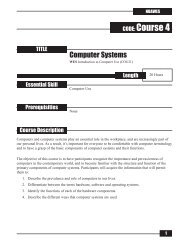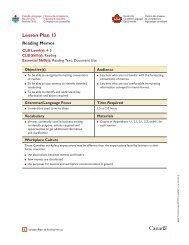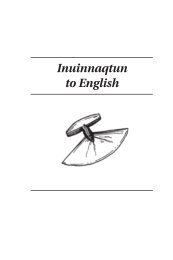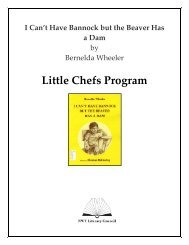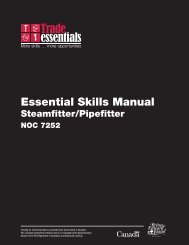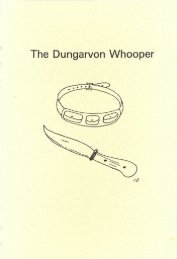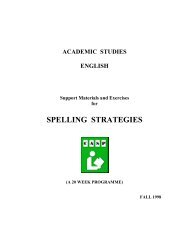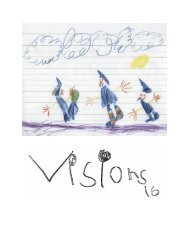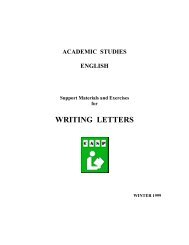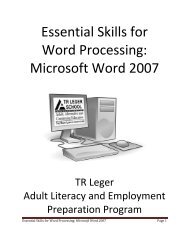Integrating Essential Skills into Training - National Adult Literacy ...
Integrating Essential Skills into Training - National Adult Literacy ...
Integrating Essential Skills into Training - National Adult Literacy ...
Create successful ePaper yourself
Turn your PDF publications into a flip-book with our unique Google optimized e-Paper software.
Background and Context<br />
HOW TO DELIVER A LESSON ON LABEL READING<br />
(ESPECIALLY SAFETY AND FIRST AID MESSAGES)<br />
What is the workplace task? Reading labels<br />
What is a label?<br />
What kinds of products have<br />
labels?<br />
What information can be found<br />
on a label?<br />
What are some ways to<br />
emphasize information on a<br />
label?<br />
Why is it important that we<br />
know how to read key<br />
messages on labels?<br />
Specific Example (Practice Exercise: Acetone Label)<br />
What design features of the<br />
label “jump out at you” at first<br />
glance?<br />
(Previewing before reading in<br />
more detail.)<br />
What vocabulary words and<br />
symbols need to be addressed<br />
in order to read this label?<br />
What does the Acetone label<br />
tell readers when read in detail?<br />
What pattern does the first aid<br />
section follow?<br />
Show trainees a number of products with labels and generate a<br />
group definition.<br />
Brainstorm a list with trainees (e.g.) medicines, hair products,<br />
processed food, thinners, glue, cosmetics, cleaners, paints, cement,<br />
machinery, shipping boxes, furniture that needs to be put together,<br />
toys, CDs, tools, etc.<br />
Ask trainees to brainstorm a list based on label samples (e.g.) safety<br />
precautions, first aid treatment, warnings, directions for use, product<br />
name, dosage or amounts to use, ingredients or parts, nutrition<br />
information, use restrictions, proper storage instructions, expiry date,<br />
manufacturer, etc.<br />
Brainstorm a list with trainees based on label samples (e.g.) bright<br />
colour, hazard symbols, block letters, bolding, extra white space,<br />
larger font size, exclamation mark, placement on label, etc.<br />
Brainstorm a list with trainees (e.g.) to work safely with the product,<br />
to use the product correctly and avoid damaging or wasting<br />
materials, to apply first aid correctly if there is an accident, to store<br />
the product correctly to avoid wastage or accidents, etc.<br />
Some possible answers:<br />
some words are bold and all letters are in capitals<br />
there is a picture of a fire<br />
ACETONE with a chemical name and some numbers<br />
the letters HCL are at bottom in a box<br />
three sentences begin with IF<br />
information in the top half of the label is about how to use the<br />
product safely<br />
information in the bottom half is first aid procedures<br />
Some possible answers: flammable (and symbol), irritation, mucous<br />
membranes, ventilation, flush, inhaled, artificial resuscitation, dilute,<br />
unconscious, convulsive<br />
There will usually be 4 sections or categories of information:<br />
hazard symbol: flammable<br />
precautions: keep away from heat, sparks and flame; keep<br />
away from eyes, skin and clothing; keep container closed; use<br />
adequate ventilation; wash thoroughly after handling<br />
what medical conditions can result if you don’t follow the<br />
precautions: causes irritation of eyes, skin and mucous<br />
membranes (acute); may cause dermatitis (chronic)<br />
first aid treatment: see below<br />
Complete the first aid label table.




